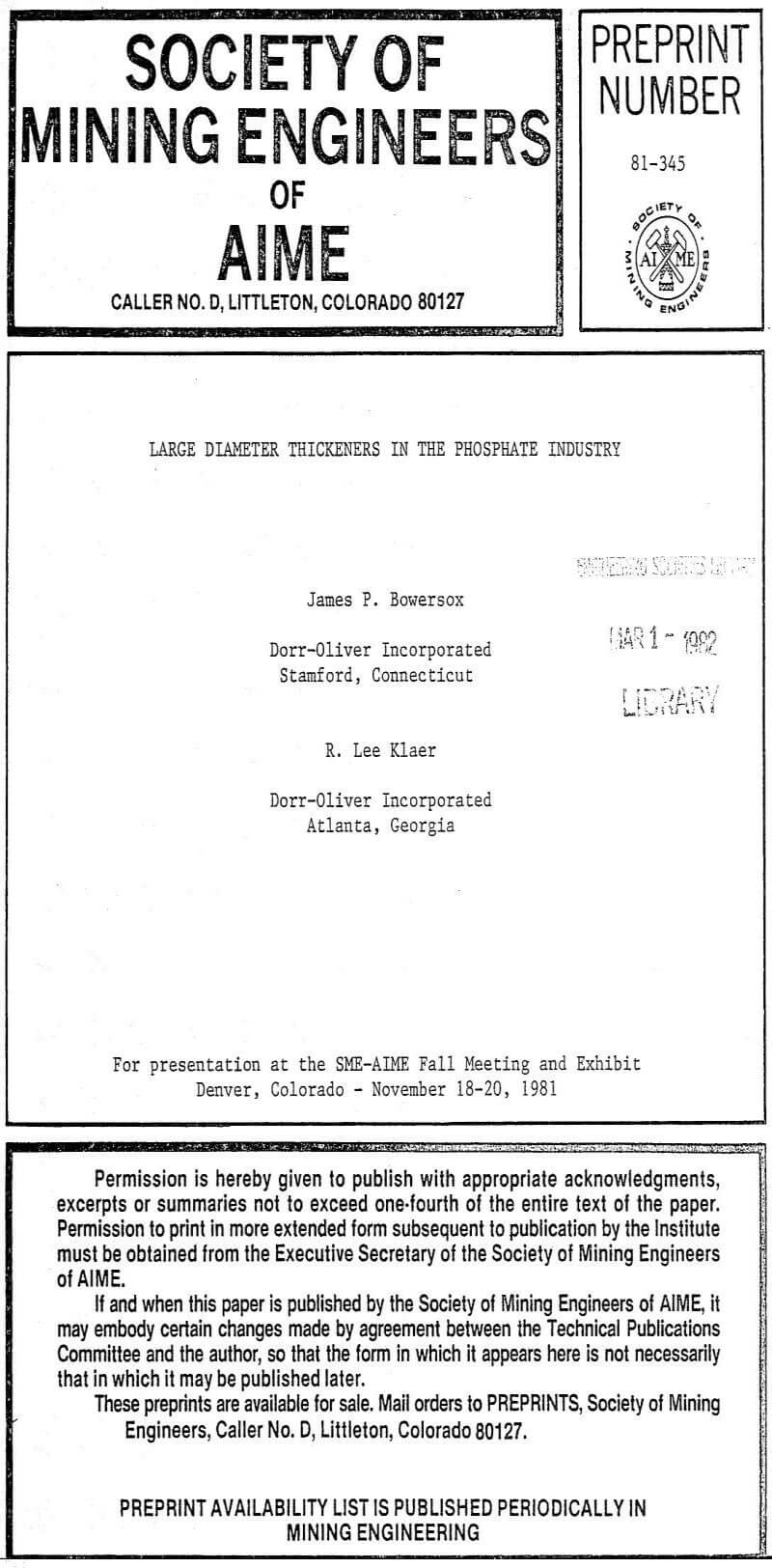Development of the Hydrostatic Bearing Mechanism evolved from the caisson thickener design. Conventional thickener mechanisms are driven by gearing which rides on ball or roller type anti-friction bearings. It would not be feasible to use this method of support with a very large diameter bearing, especially with high torque, vertical and unbalanced loads. Additional stresses are produced in large bearings by temperature changes in machine tolerances. These stresses make proper design and fabrication costly and operating difficult. It is also important to note with large thickeners that the loads increase by an exponential function as the diameter increases.
The basic principle involved in the hydrostatic bearing design is simple. The main gear is attached to a movable continuous runner that passes over a series of stationary pads. An oil film, capable of supporting the load, is maintained between the two surfaces. A separate hydrostatic journal bearing system is incorporated to stabilize the runner in a horizontal direction. The motion between the two surfaces is slow due to the speed required for thickener operation and no dynamic force is present to sustain the loads. For this reason, an external source is used to maintain the pressure. The term hydrostatic is used because the oil is continually replenished and the pressure maintained by a pump. Typically, the oil film is between 0.125 and 0.250 millimeters thick. The coefficient of friction is 1/200th that of a conventional mechanical bearing. The oil film, or hydrostatic type of bearing, is designed so that it is self-righting and self-centering.
Each pad has the flow controlled by an orifice to insure that it carries its portion of the load up to the maximum design loading conditions. This step insures than the available oil supply is adequate and at the proper pressure to sustain the load.
To provide maximum reliability and minimum downtime, the center mechanism is equipped with two identical pumping systems. Each pumping system can start up and operate the hydrostatic bearing system independent of the other system.
It is possible to perform maintenance on one of the pumping systems without shutting down the thickener. An electrical control system automatically monitors any malfunction of the hydrostatic bearing system. Such items as machine torque, bearing film pressure, oil temperature, oil level, and oil filter conditions are continuously measured. If a malfunction occurs, the other pumping system will automatically come on and it will stay on until the problem is corrected.
The rake arm which helps to transport settled solids to the center of the machine is attached to the center cage which surrounds the caisson. The cage is attached to the internal gear runner through a drive lug and pin arrangement.
The entire structure is then supported on the oil film and rotated on a conventional drive arrangement. Two, three or four of these pinion gear motor configurations are used depending on the torque requirements for the thickener.
